3.01 - Photo standard example
Below are photo examples of bladder dominant and black bluebush dominant satlbush plains in different conditions (excellent - poor).
Saltbush Plains – Bladder saltbush dominant
Excellent (A)
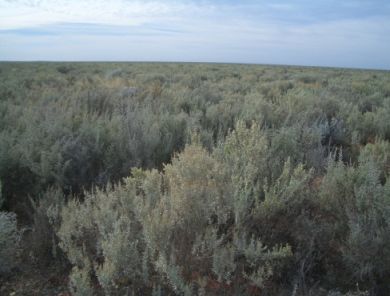 |
||||
| Diversity of annual and perennial palatable plants dominated by bladder saltbush of varying ages and with regeneration (mix of ages). Some black bluebush, thorny saltbush and also medics, creeping saltbush and a range of grasses. Good overall cover, including litter and lichen and plant density high.
|
Highly productive and resilient. | No erosion evident. | ||
Good (B)
 |
||||
| Less diversity and increase in less palatable plants i.e. black bluebush.
Shrubs more sparse and more evidence of bare areas in between, indicating less forbs (small shrubs) and grasses. Some lichen and litter cover.
|
Fluctuating productivity, less resilient but still high in good seasons. | Very minor erosion. | ||
Fair (C)
|
||||
| Reduced cover of bladder saltbush, very sparse – 6- 12 plant space between, significant bare areas. Minimal forbs and grasses between shrubs. |
Productive in good seasons.
|
Soil disturbance in bare areas, soil exposed to erosion. |
||
Poor (D) |
||||
| Dominance of annual and ephemeral species with relatively low palatability.
No regeneration of saltbush and if they exist are degenerate. Isolated small shrubs, if any at all. |
Impaired productivity, very seasonally dependant, low or non-existent in dry seasons. | Severe erosion and high susceptibility of soils to erosion in all seasons. | ||
Saltbush plains - Black Bluebush dominant
Excellent (A)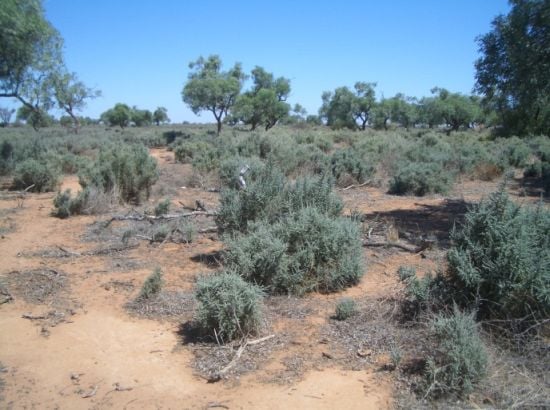 |
||
| Diversity of annual and perennial palatable plants, dominated by Black Bluebush of varying ages and with regeneration (mix of ages). Some thorny saltbush.
Some medics and creeping saltbush. Good overall cover, including litter and lichen and plant density high. |
Highly productive and resilient.
|
No erosion evident. |
Good (B)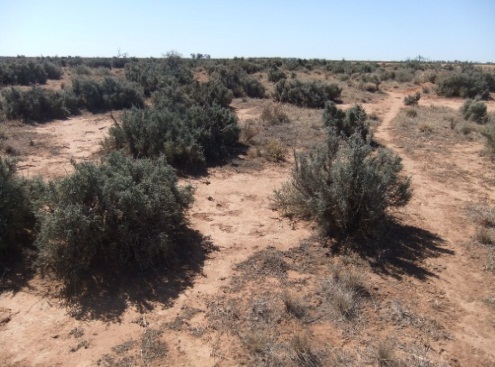 |
||
| Less diversity and increase in less palatable plants i.e. Black Bluebush. Shrubs more sparse and more evidence of bare areas in between, indicating less forbs (small shrubs) and grasses. Some lichen and litter cover. |
Fluctuating productivity, less resilient but still high in good seasons.
|
Very minor erosion. |
Fair (C)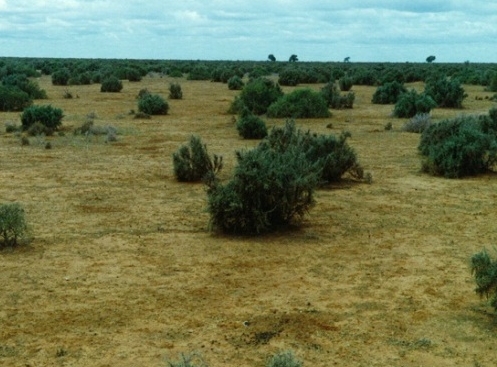 |
||
| Reduced cover of Black Bluebush and other perennials, very sparse – 6- 12 plant space between, significant bare areas.
Minimal forbs and grasses between shrubs. |
Productive in good seasons only. | Soil disturbance in bare areas, soil exposed to erosion. |
Poor (D)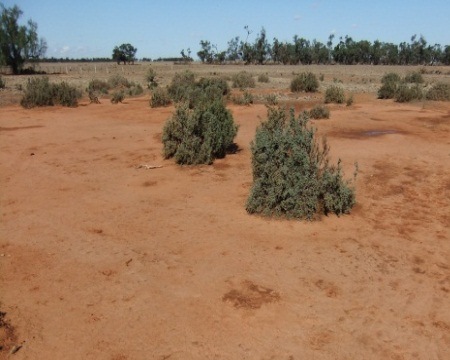 |
||
| Dominance of annual and ephemeral species with relatively low palatability.
No regeneration of Black Bluebush and if they exist they are degenerate. Isolated small shrubs, if any at all. |
Impaired productivity, very seasonally dependant, low or non-existent in dry seasons. | Severe erosion and high susceptibility of soils to erosion in all seasons. |
